Abstract
1. The effects of distension of the urinary bladder on heart rate, maximum rate of change of left ventricular pressure (dP/dt max) and hindlimb vascular resistance together with their modulation at different carotid sinus pressures were studied in dogs anaesthetized with a mixture of chloralose and urethane and artificially ventilated. 2. When the carotid sinus mean perfusion pressure was raised in randomly selected steps from 60 to 210 mmHg, it caused a progressive bradycardia, and a reduction in left ventricular dP/dt max and in arterial blood pressure, together with vasodilatation in the perfused hindlimb. Distension of the bladder at each level of carotid sinus pressure resulted in tachycardia, a small but significant increase in left ventricular dP/dt max (160 +/- 30 mmHg s-1) and hindlimb vasoconstriction. 3. When heart rate and arterial blood pressure were held constant to exclude these secondary effects on left ventricular dP/dt max, raising the carotid sinus pressure caused a progressive reduction in left ventricular dP/dt max and hindlimb vasodilatation. Superimposition of tests of bladder distension at each level of sinus pressure resulted in variable responses, but overall there was a significant increase in left ventricular dP/dt max of 190 +/- 54 mmHg s-1. Hindlimb vasocontriction, however, was a consistent finding. 4. The gain of the relationship between the carotid sinus perfusion pressure and left ventricular dP/dt max was unaffected by distension of the bladder. 5. It is concluded that, when changes secondary to increases in heart rate and blood pressure are prevented, distension of the bladder causes a small but significant reflex increase in left ventricular dP/dt max. The responses, however, are variable and the possible reasons for this are discussed.
Full text
PDF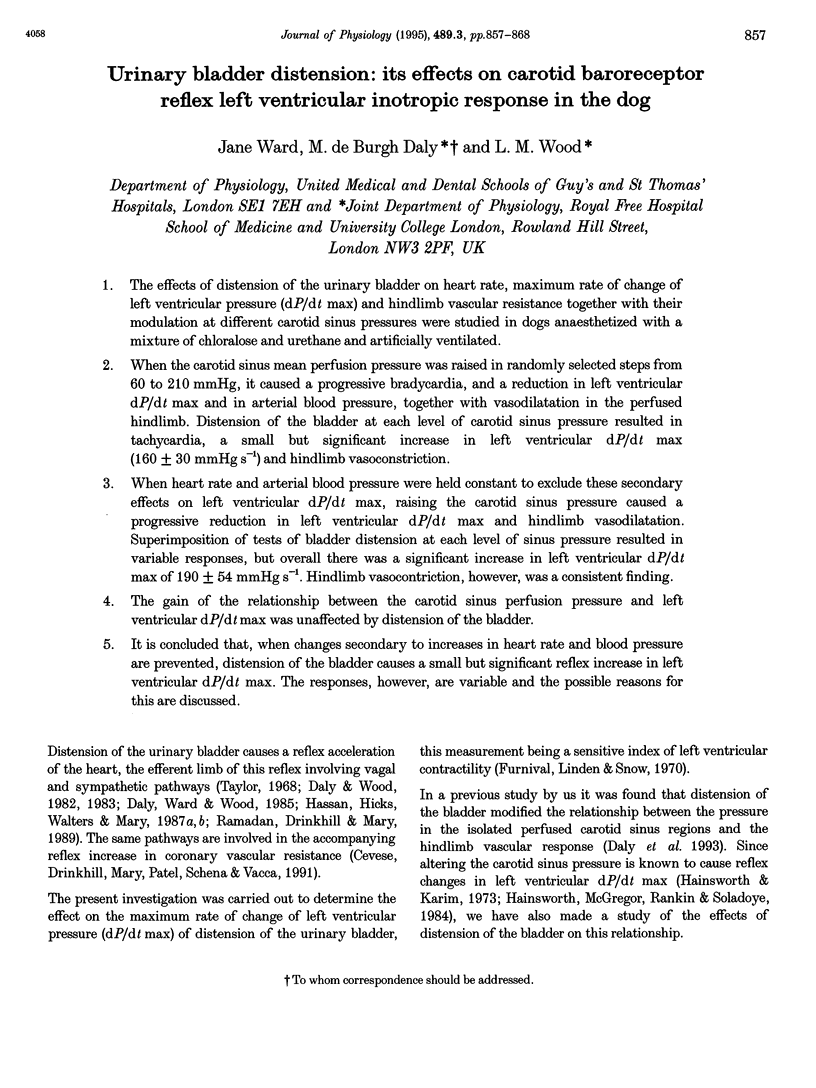
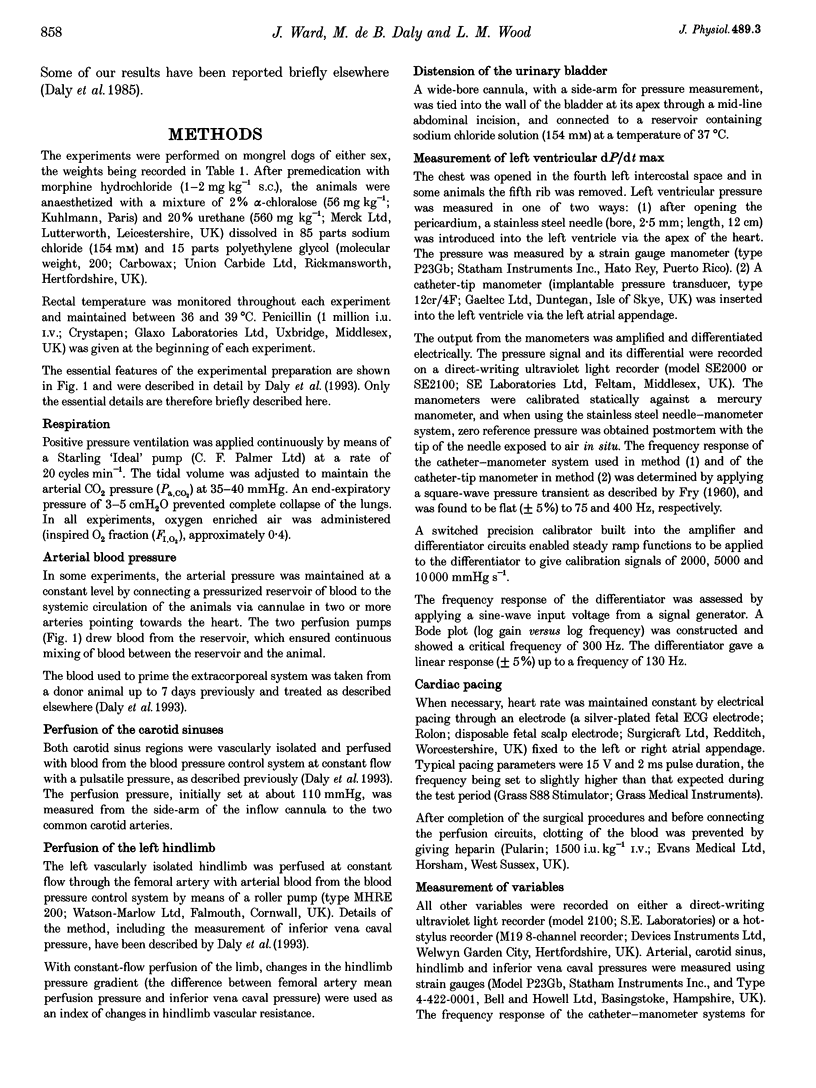
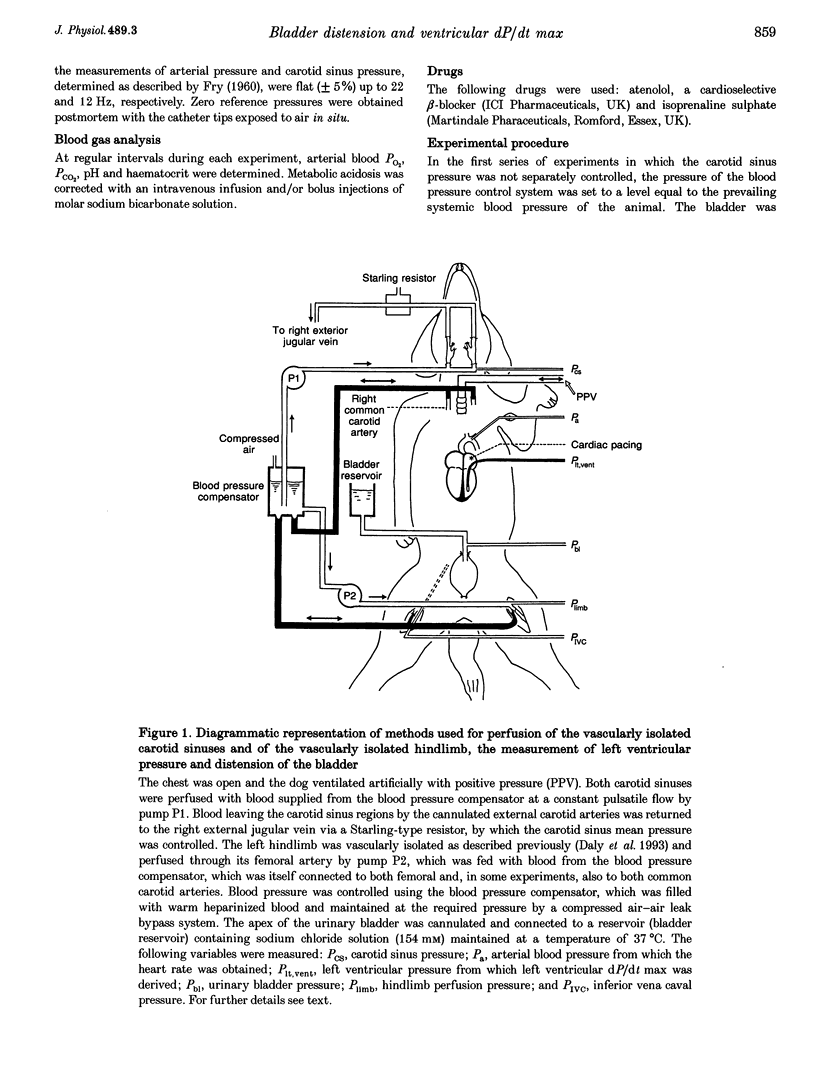
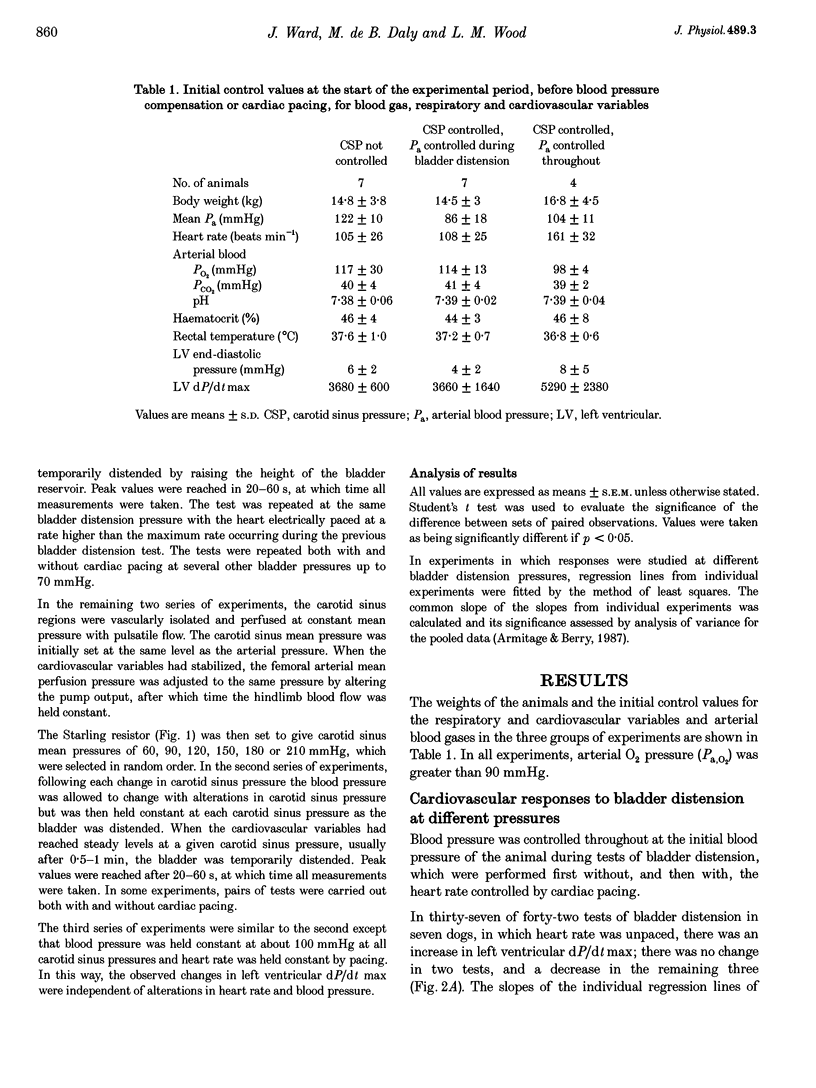
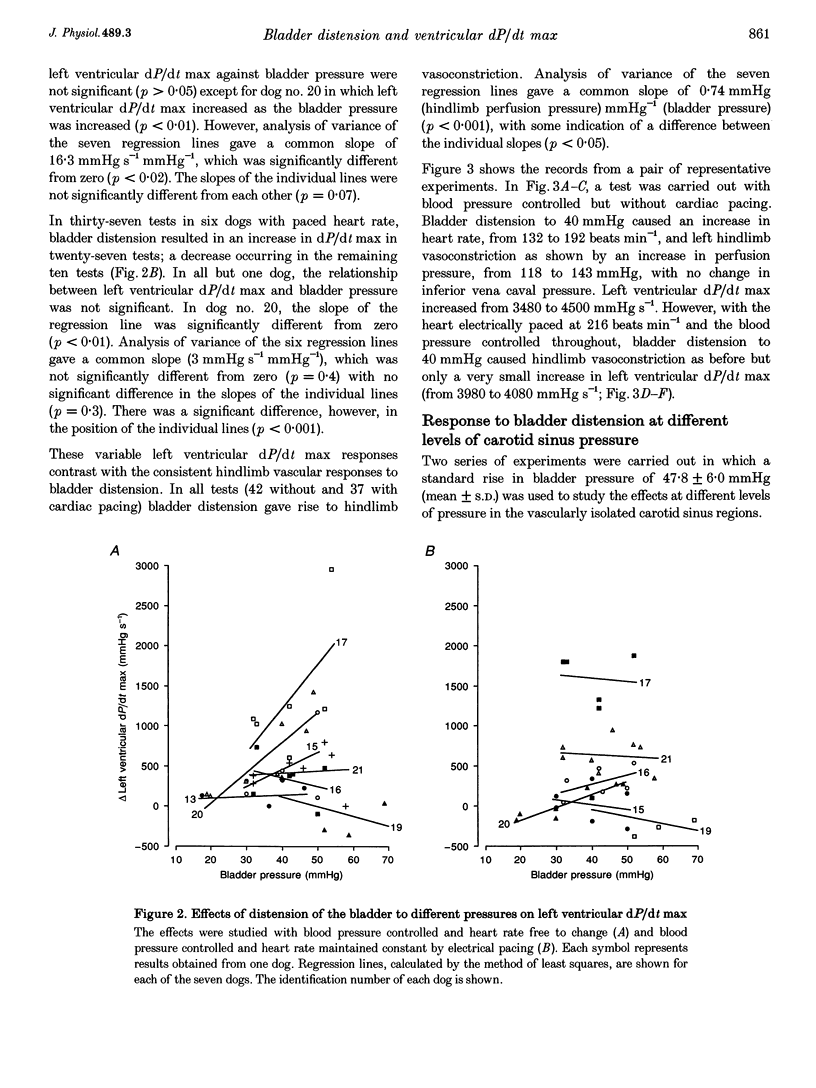
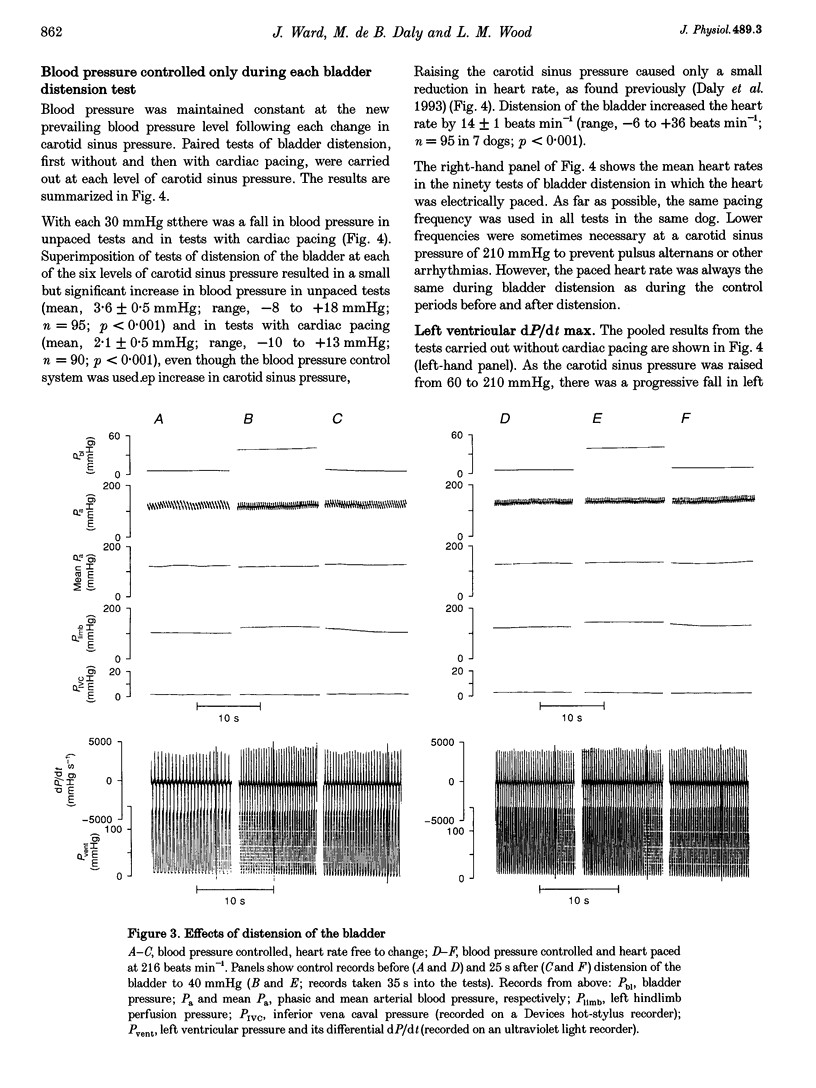
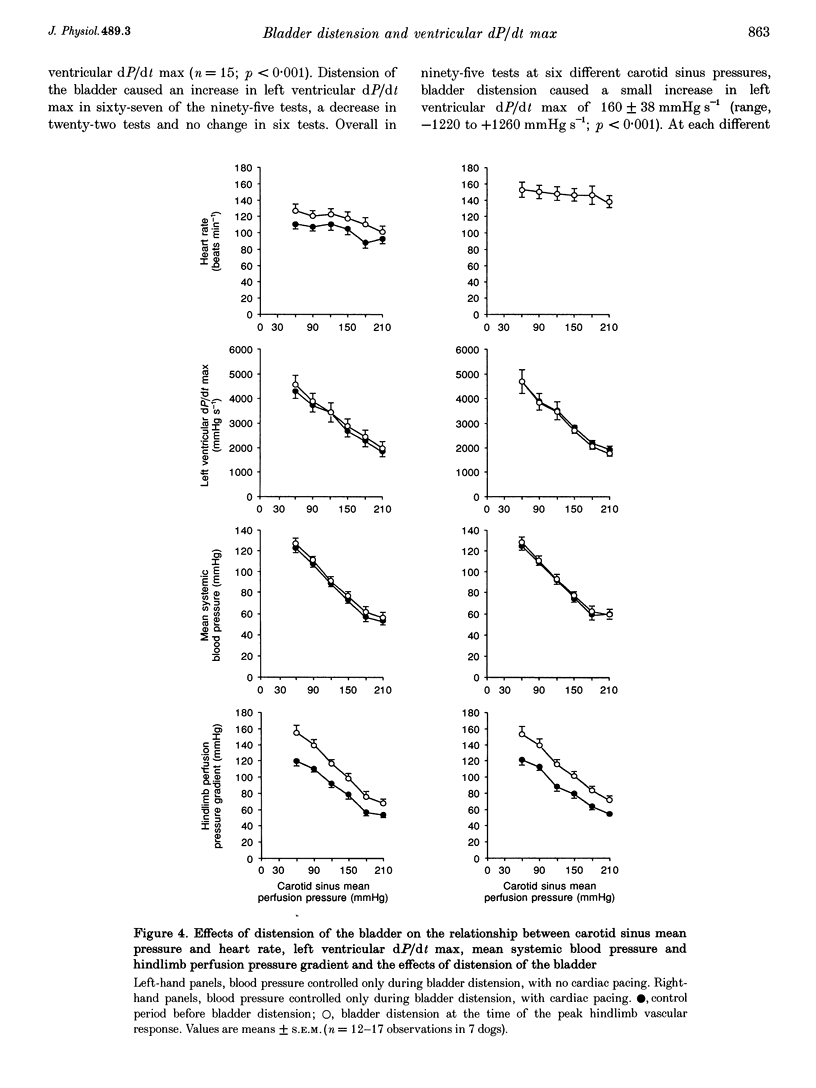
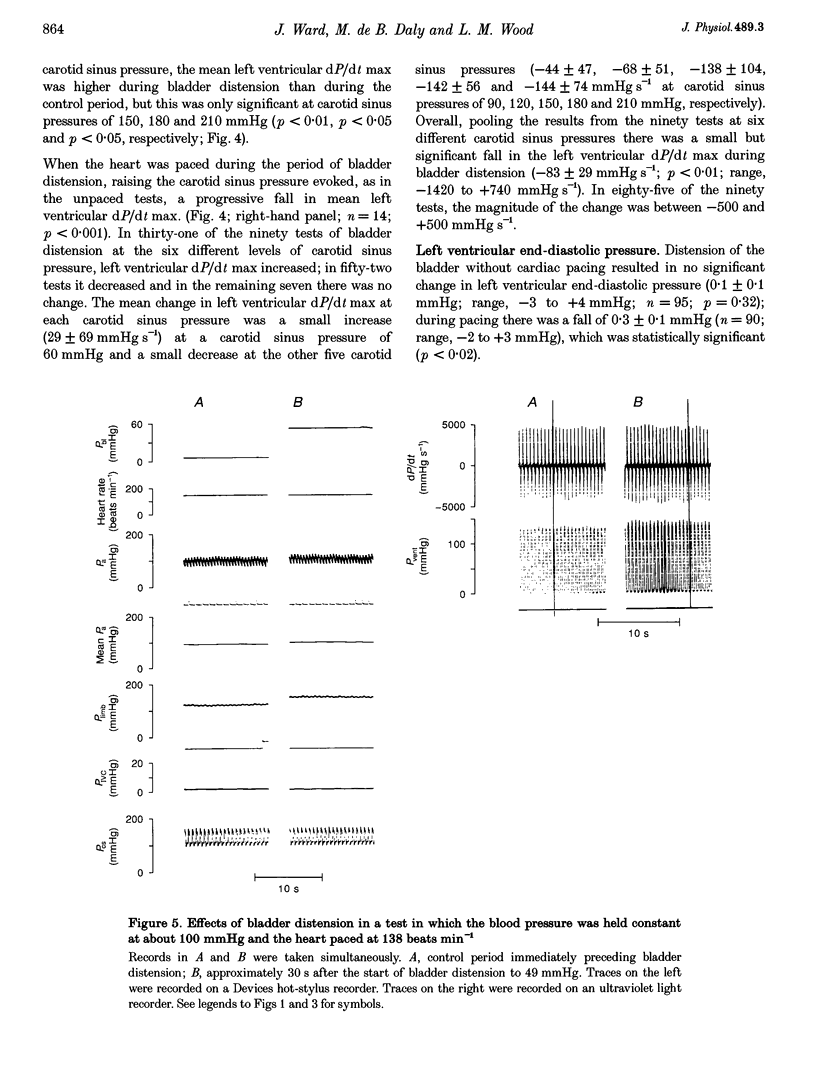
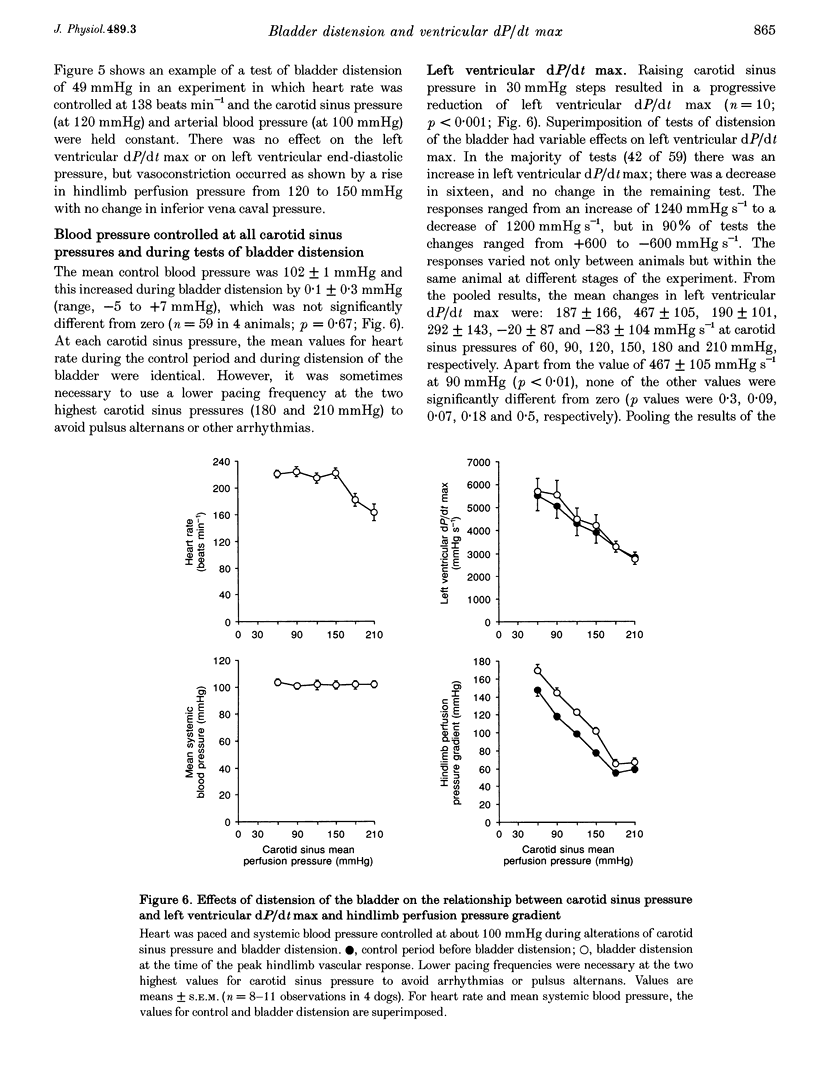
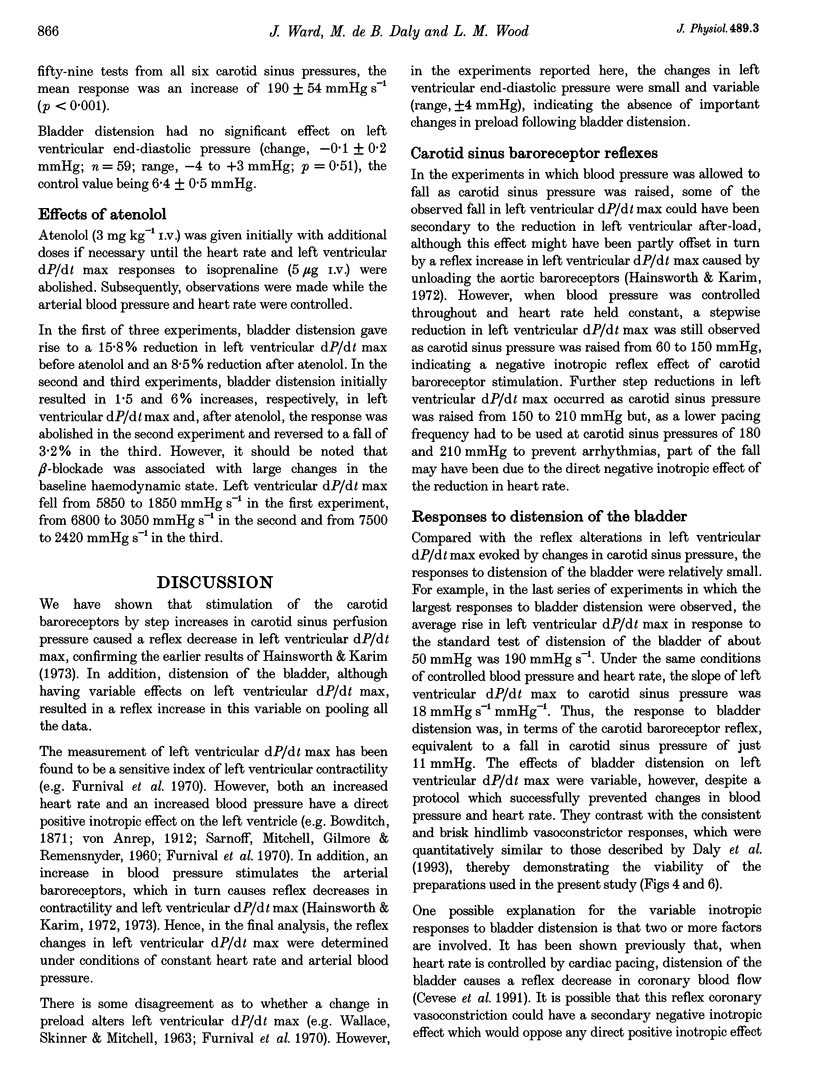
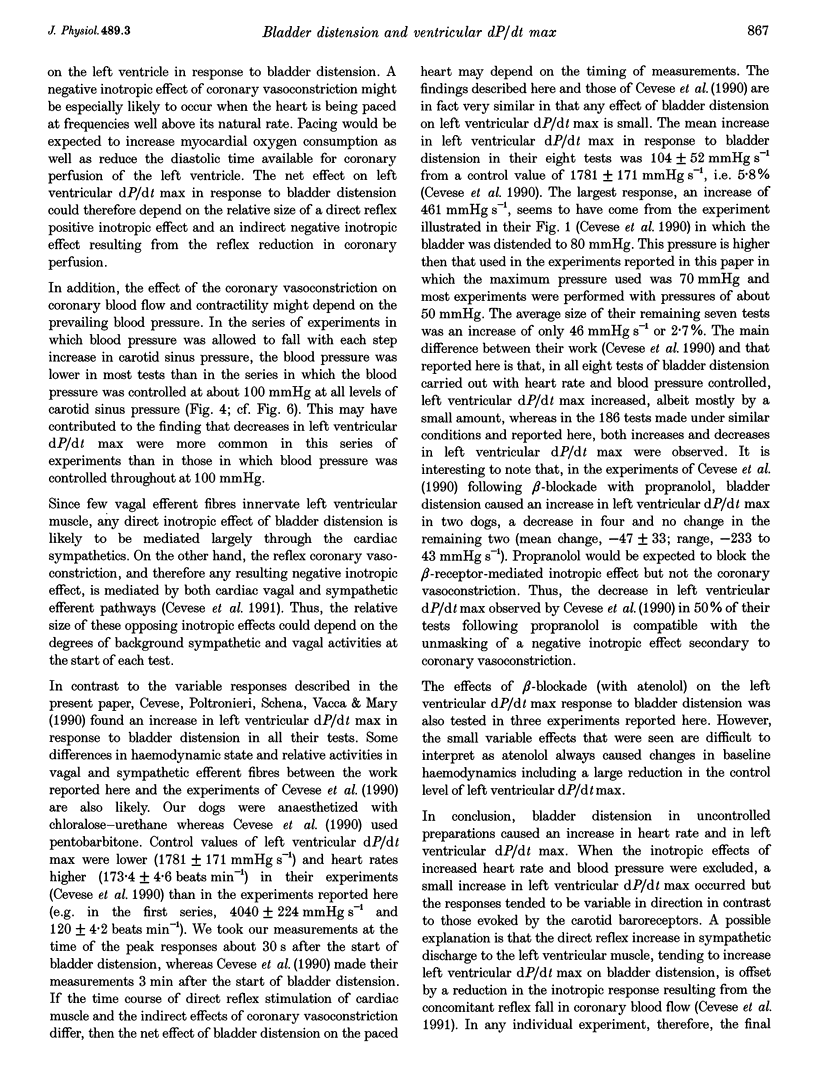
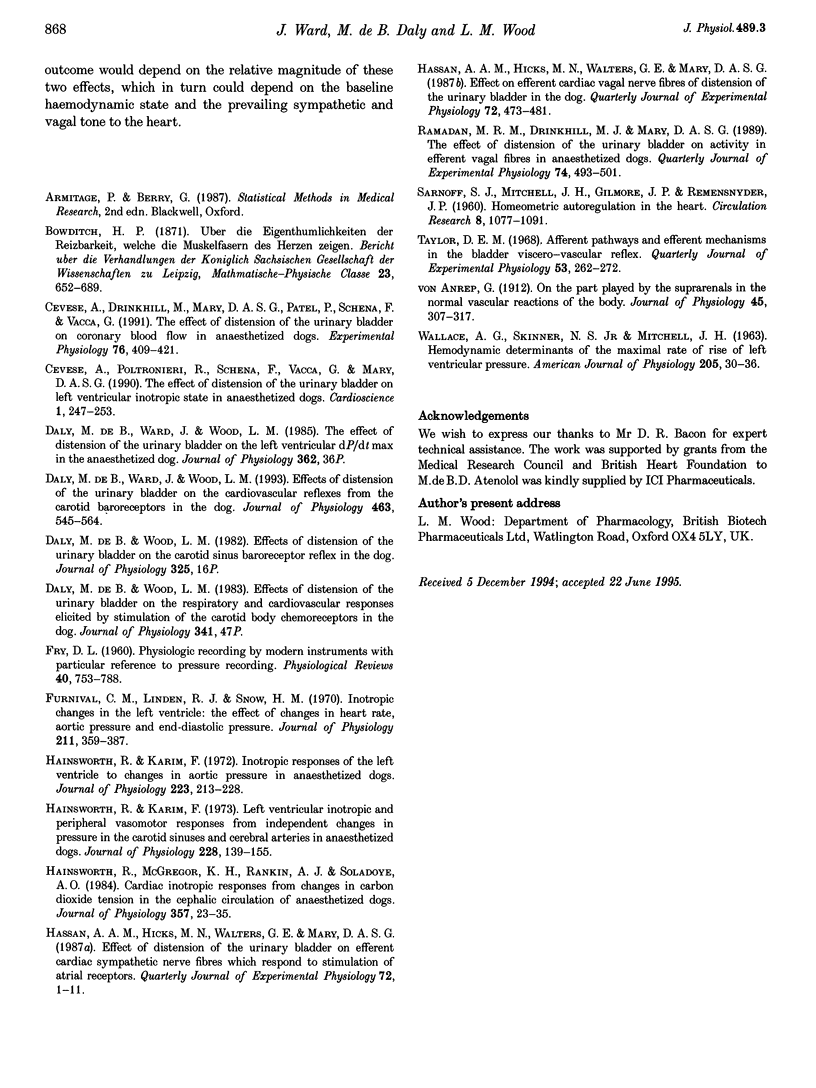
Selected References
These references are in PubMed. This may not be the complete list of references from this article.
- Cevese A., Drinkhill M., Mary D. A., Patel P., Schena F., Vacca G. The effect of distension of the urinary bladder on coronary blood flow in anesthetized dogs. Exp Physiol. 1991 May;76(3):409–421. doi: 10.1113/expphysiol.1991.sp003508. [DOI] [PubMed] [Google Scholar]
- Cevese A., Poltronieri R., Schena F., Vacca G., Mary D. A. The effect of distension of the urinary bladder on left ventricular inotropic state in anesthetized dogs. Cardioscience. 1990 Dec;1(4):247–253. [PubMed] [Google Scholar]
- FRY D. L. Physiologic recording by modern instruments with particular reference to pressure recording. Physiol Rev. 1960 Oct;40:753–788. doi: 10.1152/physrev.1960.40.4.753. [DOI] [PubMed] [Google Scholar]
- Furnival C. M., Linden R. J., Snow H. M. Inotropic changes in the left ventricle: the effect of changes in heart rate, aortic pressure and end-diastolic pressure. J Physiol. 1970 Dec;211(2):359–387. doi: 10.1113/jphysiol.1970.sp009283. [DOI] [PMC free article] [PubMed] [Google Scholar]
- Hainsworth R., Karim F. Inotropic responses of the left ventricle to changes in aortic arch pressure in anaesthetized dogs. J Physiol. 1972 May;223(1):213–228. doi: 10.1113/jphysiol.1972.sp009842. [DOI] [PMC free article] [PubMed] [Google Scholar]
- Hainsworth R., Karim F. Left ventricular inotropic and peripheral vasomotor responses from independent changes in pressure in the carotid sinuses and cerebral arteries in anaesthetized dogs. J Physiol. 1973 Jan;228(1):139–155. doi: 10.1113/jphysiol.1973.sp010077. [DOI] [PMC free article] [PubMed] [Google Scholar]
- Hainsworth R., McGregor K. H., Rankin A. J., Soladoye A. O. Cardiac inotropic responses from changes in carbon dioxide tension in the cephalic circulation of anaesthetized dogs. J Physiol. 1984 Dec;357:23–35. doi: 10.1113/jphysiol.1984.sp015486. [DOI] [PMC free article] [PubMed] [Google Scholar]
- Hassan A. A., Hicks M. N., Walters G. E., Mary D. A. Effect of distension of the urinary bladder on efferent cardiac sympathetic nerve fibres which respond to stimulation of atrial receptors. Q J Exp Physiol. 1987 Jan;72(1):1–11. doi: 10.1113/expphysiol.1987.sp003035. [DOI] [PubMed] [Google Scholar]
- Hassan A. A., Hicks M. N., Walters G. E., Mary D. A. Effect on efferent cardiac vagal nerve fibres of distension of the urinary bladder in the dog. Q J Exp Physiol. 1987 Oct;72(4):473–481. doi: 10.1113/expphysiol.1987.sp003089. [DOI] [PubMed] [Google Scholar]
- Ramadan M. R., Drinkhill M. J., Mary D. A. The effect of distension of the urinary bladder on activity in efferent vagal fibres in anaesthetized dogs. Q J Exp Physiol. 1989 Jul;74(4):493–501. doi: 10.1113/expphysiol.1989.sp003296. [DOI] [PubMed] [Google Scholar]
- SARNOFF S. J., MITCHELL J. H., GILMORE J. P., REMENSNYDER J. P. Homeometric autoregulation in the heart. Circ Res. 1960 Sep;8:1077–1091. doi: 10.1161/01.res.8.5.1077. [DOI] [PubMed] [Google Scholar]
- Taylor D. E. Afferent pathways and efferent mechanisms in the bladder viscero-vascular reflex. Q J Exp Physiol Cogn Med Sci. 1968 Jul;53(3):262–272. doi: 10.1113/expphysiol.1968.sp001969. [DOI] [PubMed] [Google Scholar]
- WALLACE A. G., SKINNER N. S., Jr, MITCHELL J. H. Hemodynamic determinants of the maximal rate of rise of left ventricular pressure. Am J Physiol. 1963 Jul;205:30–36. doi: 10.1152/ajplegacy.1963.205.1.30. [DOI] [PubMed] [Google Scholar]
- de Burgh Daly M., Ward J., Wood L. M. Effects of distension of the urinary bladder on the cardiovascular reflexes from the carotid baroreceptors in the dog. J Physiol. 1993 Apr;463:545–564. doi: 10.1113/jphysiol.1993.sp019610. [DOI] [PMC free article] [PubMed] [Google Scholar]
- von Anrep G. On the part played by the suprarenals in the normal vascular reactions of the body. J Physiol. 1912 Dec 9;45(5):307–317. doi: 10.1113/jphysiol.1912.sp001553. [DOI] [PMC free article] [PubMed] [Google Scholar]


